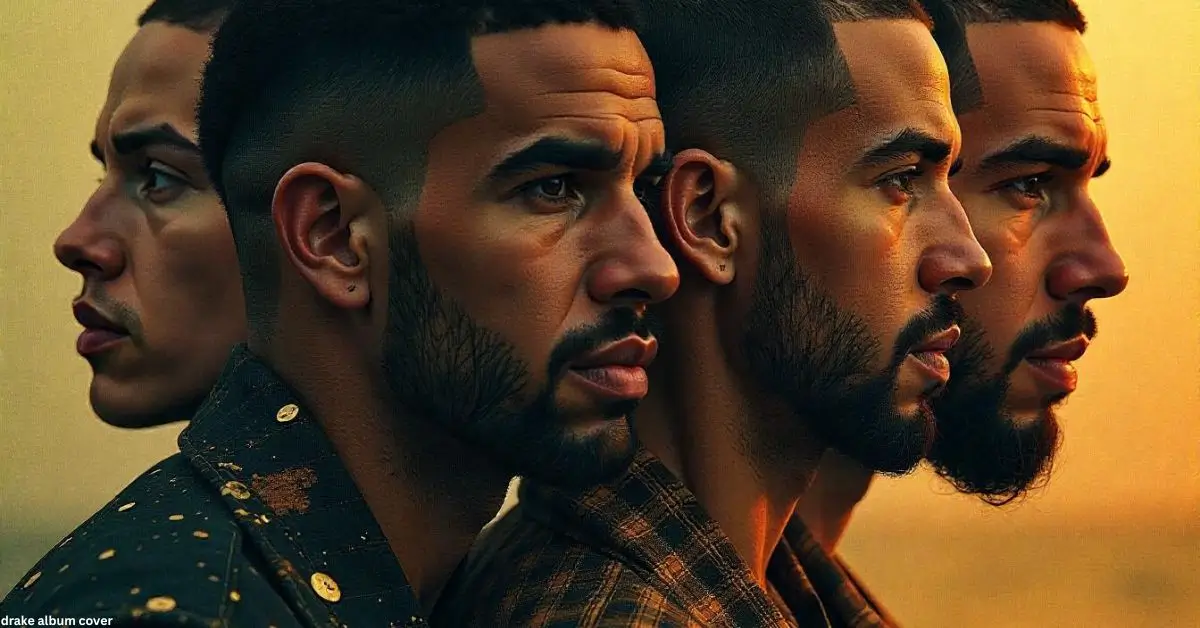When discussing musical legends, Drake undoubtedly secures a top spot in the conversation. But it’s not just his sound that defines him—it’s the imagery that complements it. From the moment a new project is announced, anticipation builds not only for the music but also for the Drake album cover. Each release is accompanied by a piece of art that encapsulates the mood, concept, and era it represents. These visuals go beyond traditional album artwork—they create a complete narrative experience.
Whether it’s through symbolic portraits, abstract elements, or viral emojis, the Drake album is a powerful storytelling medium. In this article, we will explore how these covers have evolved, examine their impact on pop culture and branding, and understand the art direction that goes into making them so iconic.
A Timeline of Evolution in Drake’s Album Art
From his debut studio album to his latest projects, Drake’s covers reflect the transformation of both his sound and persona. Each Drake album provides insight into his emotional and creative journey, adapting to new influences in music, design, and technology.
Thank Me Later: The Humble Beginning
Released in 2010, Thank Me Later introduced Drake as a rising force in hip hop. The cover is striking in its simplicity: a close-up portrait with muted red and black tones. It presents a contemplative and serious tone, capturing a man on the verge of something massive. The minimalist nature mirrors his vulnerability as an artist just stepping into the global spotlight.
Take Care: Luxury Meets Loneliness
For Take Care (2011), the Drake album cover took a more luxurious and baroque turn. Set in a golden, opulent environment, Drake sits at a table with symbolic objects—goblets, candles, and other regal elements. The visual exudes wealth and power but contrasts with his melancholic expression, suggesting the emotional toll of success. The design aligns with the album’s themes of heartbreak, introspection, and fame.
Nothing Was the Same: Transformation in Color
Perhaps one of his most beloved covers, Nothing Was the Same (2013), features an illustrated portrait of Drake looking to the right, opposite a younger version of himself facing left. The sky-blue background with fluffy clouds makes the image dreamlike. This Drake album cover symbolizes change and growth, marking a transition in his artistry from up-and-comer to industry leader.
Views: A Toronto Icon
Views (2016) may have delivered the most meme-worthy cover in Drake’s discography. The Drake album cover featured a tiny version of himself sitting atop Toronto’s CN Tower. Despite its whimsical appearance, the message was clear: Drake had ascended to untouchable status in both his city and the industry. The cover became instantly recognizable and inspired thousands of Photoshop edits and memes.
Scorpion: Duality and Monochrome Vibes
Released in 2018, Scorpion’s cover returned to a more classic, monochromatic style. The black-and-white headshot reflects the dual nature of the double album—one side focused on rap, the other on R&B. This Drake album is straightforward but effective, aligning perfectly with the introspective tone and sonic split of the album.
Certified Lover Boy: Controversy and Commentary
In 2021, Drake opted for a bold and unexpected move. The Certified Lover Boy cover, designed by famed artist Damien Hirst, showcased 12 pregnant woman emojis of varying skin tones. The polarizing design sparked instant debate online. Critics questioned its artistic value, while fans praised its subversive humor. This Drake album cover stood as a playful critique of modern romance and pop culture, proving once again that Drake knows how to dominate both music and conversation.
For All the Dogs: Childhood Innocence Meets Raw Emotion
Drake’s 2023 release, For All the Dogs, features child-like crayon drawings of a dog with glowing red eyes. Designed by his son, the artwork embraces innocence, nostalgia, and familial bonds. The abstract, DIY aesthetic reflects a more vulnerable and honest side of the rapper. This Drake album cover is deeply personal, showing that sometimes raw authenticity can speak louder than high production value.
The Symbolism Behind Drake’s Visuals
Each Drake album functions as a coded message. Whether it’s the color scheme, posture, or background elements, every choice serves a purpose. For instance, the golden goblet in Take Care symbolizes both wealth and emptiness, while the emoji-laden Certified Lover Boy challenges traditional ideas of album aesthetics.
The covers are not random; they are extensions of his lyrical themes. When Drake discusses heartbreak, identity, success, or legacy in his music, the visuals echo those ideas. This alignment between content and imagery makes his projects feel cohesive and intentional.
Behind the Scenes: Creative Collaborations
Drake’s album art wouldn’t be possible without the contributions of world-renowned visual artists, photographers, and designers. Over the years, he’s worked with:
- Virgil Abloh, who shaped the visual landscape of modern hip hop fashion and culture.
- Theo Skudra, his personal photographer and creative director who has captured much of Drake’s visual evolution.
- Damien Hirst, a contemporary artist with a flair for controversial and thought-provoking work.
These collaborations ensure that each Drake album remains fresh, visually engaging, and deeply relevant to contemporary art movements.
Marketing Genius in Visual Branding
Drake is not only an artist but also a savvy marketer. The Drake album cover often doubles as a brand identity for an entire album cycle. From merchandise to social media campaigns, the cover art becomes the central symbol of the era.
Consider how Views spawned pop-up shops, apparel, and even memes. The Certified Lover Boy emojis were instantly recognizable and used across platforms. Each cover acts as a marketing asset designed for virality, shareability, and emotional connection.
Influence on Fan Culture and Internet Trends
The Drake album plays a vital role in fan culture. It’s common to see fans remixing or recreating the artwork with their own photos or interpretations. This interaction gives fans a sense of participation in the Drake narrative, transforming passive listeners into active community members.
This trend extends beyond music enthusiasts—graphic designers, meme creators, and influencers often engage with Drake’s visuals, spreading the content across multiple digital platforms and demographics.
Emotional Connectivity and Identity
Drake has always been an emotional and introspective artist. His music dives deep into themes of love, regret, ambition, and solitude. The Drake album mirrors these emotions visually. Whether through a cold black-and-white shot or a child’s innocent sketch, the covers capture a specific feeling or moment in time.
This emotional resonance helps fans connect with the music on a deeper level. When you see the moody opulence of Take Care or the childlike vulnerability of For All the Dogs, it sets the tone before the first track even plays.
Integration of Technology in Cover Design
As the music industry evolves, so does the use of technology in visual presentation. The Drake album cover has begun to incorporate digital tools like AI-assisted design, animation, and virtual elements. These advancements allow for a more dynamic, interactive experience.
Drake’s team understands how to adapt to these shifts, creating visuals that not only look good in physical form but also translate well across screens, social feeds, and digital streaming platforms.
Thematic Continuity Across Projects
One of the lesser-discussed aspects of Drake’s visuals is the continuity between them. Although the styles vary greatly, there’s a consistent emotional and thematic thread tying them together. The Drake album cover often touches on isolation, duality, and self-exploration.
This consistency strengthens his brand. Fans know that with every album release, they’re not just getting new music—they’re stepping into a carefully curated universe. The visuals help construct this universe in ways that lyrics alone cannot.
Global Influence and Cultural Impact
Drake’s reach extends far beyond North America. The Drake album has made waves across global art scenes, fashion trends, and marketing campaigns. In cities from Lagos to London, fans recognize the imagery associated with his albums.
He has created a universal visual language. His covers, whether humorous, serious, or abstract, resonate across different cultures and social groups, emphasizing his role as a global music icon.
Educational Value in Art and Media
Several art schools and design courses have analyzed the Drake album in classroom discussions. Instructors use them to explore topics like brand storytelling, emotional design, symbolism in media, and the convergence of visual arts and music. Drake’s visuals serve as prime case studies for how album art can transcend the music industry and influence wider creative disciplines.
Comparing the Artistic Features of Drake Album Covers
| Album | Year | Artistic Style | Emotional Tone | Symbolism & Theme |
| Thank Me Later | 2010 | Minimalist Portrait | Reflective | Humility, new beginnings |
| Take Care | 2011 | Baroque Influence | Lonely & Opulent | Fame, heartbreak, sorrow |
| Nothing Was the Same | 2013 | Illustrated Side View | Dreamlike | Growth, transformation |
| Views | 2016 | Photographic Fantasy | Empowering | Toronto pride, self-elevation |
| Scorpion | 2018 | Monochrome Portrait | Divided | Dual identity, introspection |
| Certified Lover Boy | 2021 | Emoji Conceptual | Satirical | Love, internet, modernism |
| For All the Dogs | 2023 | Child Art Sketch | Honest & Innocent | Nostalgia, legacy, simplicity |
Future Possibilities in Drake’s Visual Branding
Looking ahead, the Drake album cover will likely continue to push boundaries. As augmented reality, NFTs, and digital collectibles gain popularity, there is potential for album art to become fully interactive. Drake’s team is known for innovation, and future covers could include AR experiences or real-time visual updates based on listener data.
This evolution will only deepen the connection between artist and fan, music and image, tradition and technology.
Conclusion
The Drake album cover is more than a decorative piece—it’s a visual companion to the music, a reflection of Drake’s personal and artistic journey, and a blueprint for album branding in the digital age. Each cover introduces a new chapter, creating not just hype but also emotional depth, cultural conversation, and fan connection.
As music becomes increasingly digital and attention spans shrink, Drake proves that impactful visuals still matter. His album covers continue to engage audiences, inspire creatives, and shape the visual culture of modern music.
FAQs
What makes a Drake album cover iconic?
The combination of emotional depth, cultural relevance, and visual storytelling makes each Drake album iconic and memorable.
Has Drake ever designed his own album cover?
While he collaborates closely with designers and artists, Drake hasn’t personally illustrated a cover, though For All the Dogs was drawn by his son.
Are Drake album consistent in theme?
Yes, most of his album covers explore themes like fame, identity, love, and personal transformation, creating a cohesive visual identity.
Why was the Certified Lover Boy cover controversial?
Its use of 12 pregnant woman emojis was unexpected and sparked online debate about its artistic value, satire, and cultural commentary.
How does Drake’s album affect album sales?
Visually compelling covers enhance branding, boost merchandise appeal, and generate online buzz, contributing indirectly to sales and streams.
Which Drake album cover was most viral?
The Views cover went viral for its depiction of tiny Drake on the CN Tower, leading to thousands of memes and fan edits.












